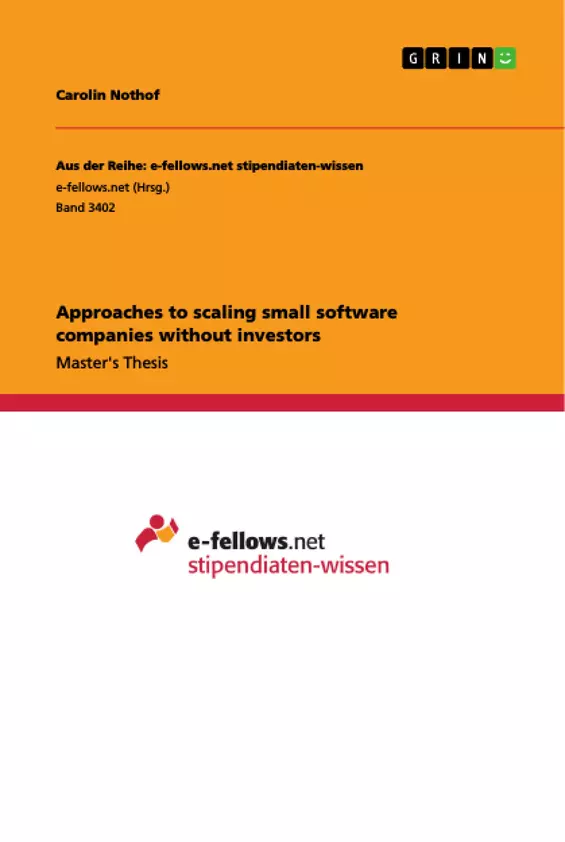Venture capital funded companies are far more present in the media than organically grown companies. This makes us erroneously assume that there is only one way to building a successful company: by raising VC (venture capital).
The truth is, however, that only a tiny fraction of all small businesses obtains VC in the course of their life span. In fact, from all the companies aspiring to receive funding through VC, 99% will never achieve this objective.
Among the 1% that does achieve funding, there are companies that have to go out of business because they get overfunded and lose their focus. Others recognize that entrepreneurs and investors have fundamentally different motivations, especially regarding the exit.
Therefore, growth-oriented founders of tech companies wonder whether it is possible for them to scale without investors, and how they can approach to do so. This thesis aims to provide answers to these two questions, primarily by investigating companies that have already scaled successfully and by extracting the main lessons from their growth journey.
Inhaltsverzeichnis (Table of Contents)
- Introduction
- Relevance and current situation
- Motivation and problem
- Objective and structure
- Theoretical principles and considerations
- Context and definitions
- Scaling
- Small software companies
- Investors
- Does it make sense to scale?
- Why should companies strive for growth?
- Why do some companies prefer to stay small?
- The company's growth options and challenges
- Bootstrapping vs. external funding
- Barriers to Growth
- Bootstrapped companies: Case studies
- Companies that started without funding
- Companies that scaled without funding
- Findings
- Lessons: How to scale a small software company
- Cash Flow: Keeping growth affordable
- Sales and Marketing in a growing organization
- Non-monetary factors
- Results
- Is it possible to scale a software company without investors?
- How can a small company scale without investors?
Zielsetzung und Themenschwerpunkte (Objectives and Key Themes)
This master's thesis examines the feasibility of scaling small software companies without relying on investor funding. It investigates the practical strategies, challenges, and key factors involved in achieving sustainable growth without external investment.
- Scaling strategies for software companies without investor capital
- Financial management and cash flow optimization for bootstrapped growth
- Sales and marketing strategies in a growing, self-funded software company
- The impact of non-monetary factors, such as company culture and leadership, on successful scaling
- Case studies of successful software companies that achieved growth without external funding
Zusammenfassung der Kapitel (Chapter Summaries)
The thesis starts with an introduction outlining the relevance of the topic, the author's motivation, and the structure of the work. Chapter 2 delves into the theoretical framework, defining key concepts such as scaling, small software companies, and investor funding. It also explores the rationale behind company growth and the potential drawbacks of scaling. Chapter 3 presents case studies of companies that successfully bootstrapped their growth. These companies are categorized based on their approach to scaling, offering valuable insights into different strategies for success. Chapter 4 presents key lessons learned from the case studies, focusing on areas such as cash flow management, sales and marketing strategies, and non-monetary factors crucial for scaling. The chapter concludes with a discussion on the role of leadership, vision, and delegation in a growing organization.
Schlüsselwörter (Keywords)
The key themes and concepts explored in this master's thesis include bootstrapped growth, scaling strategies for software companies, cash flow management, sales and marketing, company culture, leadership, and case studies of successful software companies that achieved growth without external funding.
- Citar trabajo
- Carolin Nothof (Autor), 2020, Approaches to scaling small software companies without investors, Múnich, GRIN Verlag, https://www.grin.com/document/594368



